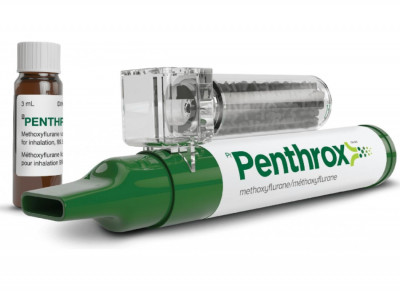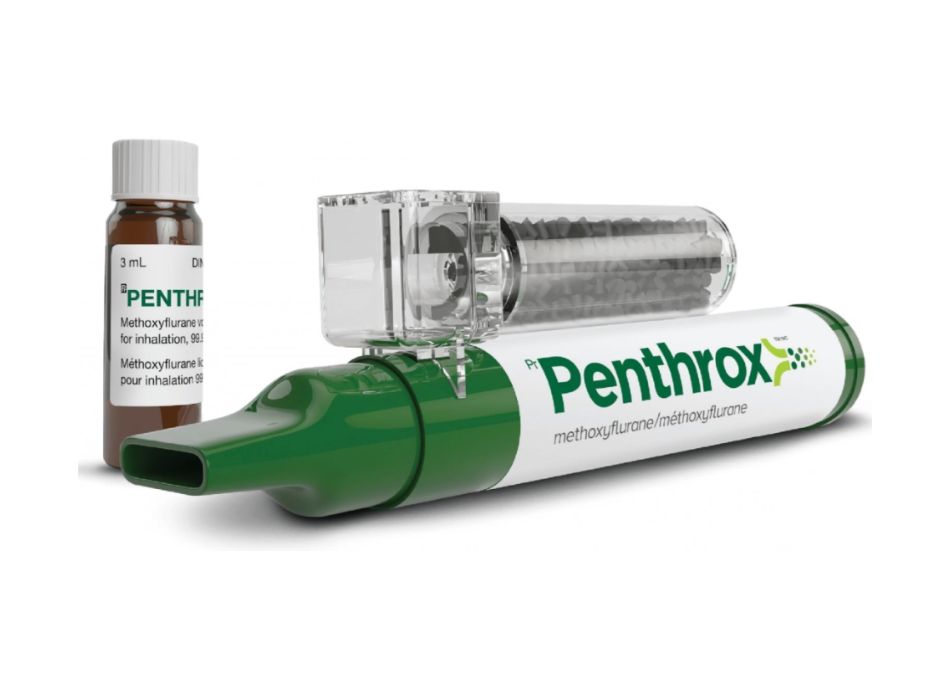
Methoxyflurane is also called Penthrox®. It's used for the short-term relief of moderate to severe pain after injury or during some short medical procedures. It helps to reduce the pain, rather than stop it completely.
- Methoxyflurane is short acting, which means it quickly disappears from your body and usually has a short recovery time.
- Methoxyflurane is not used for long-term (chronic) pain or pain that goes away and keeps coming back.
- It belongs to a family of medicines called inhalation anaesthetics.
Image credit: Douglas NZ
Methoxyflurane comes as a vapour which is breathed in through your mouth, using an inhaler device
- Methoxyflurane is in an inhaler that you breathe in so you have control of when to use it.
- It has a fruity taste and smell.
- There will always be a nurse or a doctor to supervise you using it.
- Instructions on how to use it are provided below – how to use methoxyflurane.
Tell your healthcare team if you have had a reaction to inhaled anaesthetics or if you have malignant hyperthermia
Methoxyflurane should not be used if you have malignant hyperthermia.
- Malignant hyperthermia is a rare, inherited condition that runs in families.
- For people with malignant hyperthermia, some anaesthetic medicines and gases can cause a very high fever, fast, irregular heartbeat, muscle spasms and breathing problems. It can be fatal if not treated quickly.









